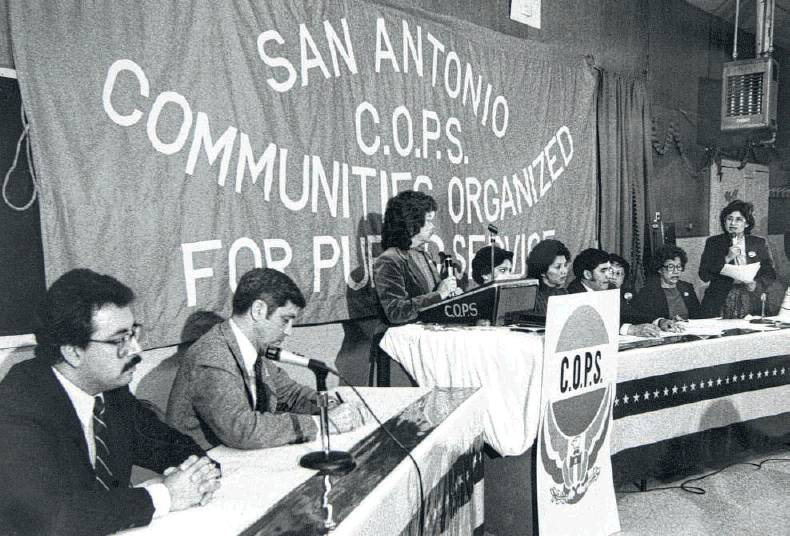COMMUNITY ACTIVISM
GRASSROOTS GROUP ENERGIZED HISPANICS
COPS launched efforts in 1974 to improve basic city services
FROM EXPRESS-NEWS ARCHIVESAmid the social unrest of the Vietnam War and at the height of the Watergate scandal, members of a new grassroots community group demanded better drainage from the city.
That was the start of the journey for Communities Organized for Public Service, a church-based group that redefined San Antonio politics by energizing Hispanic voters.
COPS, which became a model for grassroots groups, remains involved in local issues.
COPS’ odyssey began with a decision by Ernesto Cortes Jr., a San Antonian from the Southwest Side, to return to his hometown to help people in neglected areas of the city.
Cortes, who had helped organize Rio Grande Valley farm workers in the late 1960s, had gone to Chicago to study under Saul Alinsky, a pioneer in community activism. Cortes returned to San Antonio in 1973.
In August 1974, the same month that President Richard M. Nixon resigned amid the Watergate scandal, COPS members marched on City Hall and demanded better drainage.
Some areas of the city lacked paved streets, running water, sanitary sewer service, adequate police protection and other basics.
The group won the support of Mayor Charles Becker, who worked to pass a $46.8 million bond issue to fund long-neglected drainage projects on the West Side.
With a power base that was rooted in Catholic parishes, COPS members focused their anger in a positive way, remaining vocal but never violent, and brought lasting change.
COPS has taken credit for the city spending hundreds of millions on affordable housing, streets, drainage and other improvements.
Passage of a 1977 referendum allowed City Council members to be elected from districts, rather than an at-large vote, ensuring that Hispanics would have more representation.
COPS and its sister organization, Metro Alliance, created in the 1980s, also banded with businesses, school districts and universities to offer scholarships and jobs to high school seniors who met grade and attendance requirements.
That program, the San Antonio Education Partnership, was credited with lowering dropout rates at targeted high schools.
In its heyday, COPS had a strong base in 1,200 neighborhoods.
One of the group’s traditions was to hold ` accountability sessions,’’ which forced elected leaders or candidates to promise to address concerns or explain why they couldn’t. Usually, COPS members did most of the talking and were vocal in support or disapproval of politicians’ answers.
COPS also lobbied for after-school programs for children and demanded a baseball stadium on the West Side, a move that in 1992 then-Mayor Nelson Wolff credited with helping keep the San Antonio Missions in town. At the time, the group said it represented 50,000 families in 26 Catholic parishes.
COPS lost some battles, including passage of a 1989 vote on a sales tax for the Alamodome and voter passage in 1999 of an increase in car rental and hotel taxes to help finance the SBC Center.
But the group carried weight in opposing tax abatements for companies that paid low wages, discouraging the use of abatements to attract development.
When the group celebrated its 25th anniversary in 1999, 21 other community groups in seven states had used COPS as a model, including 12 in Texas.
“In organizing, you have to have some sort of anger,” Cortes told the Express-News that year. “Anger gives you passion, patience and perseverance.”
The Rev. Claude Black, a city councilman when COPS formed and San Antonio’s first African-American mayor pro tem, said in a 1999 interview that the group might have been “the best thing that ever happened to San Antonio.”
“They also brought with them a moral quality and were not asking for more than their due,” he told the San Antonio Express-News.
A longer version of this report by Scott Huddleston ran Nov. 13, 2005.

